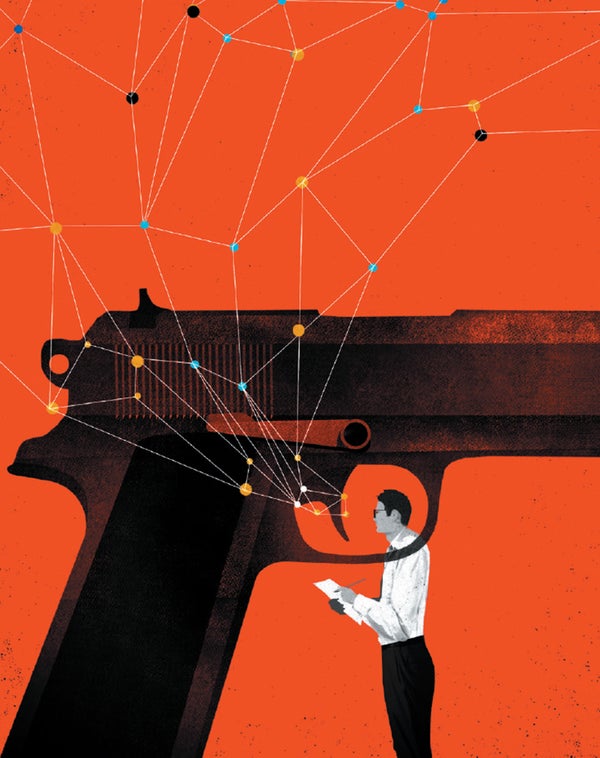When bullets fired from a passing car sliced through the St. Louis night one Sunday in June, they hit two children, killing three-year-old Kenndei Powell and seriously wounding another little girl, age six. Police in the Missouri city were not immediately able to identify or find the shooter, and Powell joined the grim ranks of the 36,000 people killed by guns every year in the U.S., on average. An additional 100,000 are injured.
That adds up to 136,000 Americans harmed or killed annually by gun violence. Worse, the death side of this sad ledger is growing, according to the Centers for Disease Control and Prevention, in an upward trend that began in 2015. While mass shootings in Sutherland Springs, Tex., or Parkland, Fla., dominate headlines, people such as the St. Louis children, cut down singly or by twos or threes, make up the bulk of the victims. Guns are a clear and present danger in this country, where there are about 393 million civilian-owned firearms—more than enough to put one in the hands of every man, woman and child and amounting to the highest rate of gun ownership in the world by far.
The tremendous toll makes gun violence a huge public health problem. Yet unlike other pressing health threats, Americans have few ideas about the most effective prevention strategies because there has been almost no large-scale research on the issue.
On supporting science journalism
If you're enjoying this article, consider supporting our award-winning journalism by subscribing. By purchasing a subscription you are helping to ensure the future of impactful stories about the discoveries and ideas shaping our world today.
All that could change this year. In an appropriations bill this spring, the U.S. House of Representatives included $50 million to be used for such studies by the CDC and the National Institutes of Health—the first time in decades that this kind of support has been given. If the U.S. Senate concurs and the bill becomes law, researchers need to jump at this opportunity.
Congress created the research gap in the first place, so it is right for Congress to fix it. In 1996, after a series of studies linked gun ownership to increased violence and crime and prompted an antiresearch campaign from the National Rifle Association of America (NRA), legislators inserted language into the CDC's budget bill that said no money could be used to “promote gun control.” Congress also zeroed out the agency's budget for firearms research. The message was clear, and federally supported science in this area ground to a halt.
Since then, dozens of small-scale studies have been carried out—research comparing the effects of licensing laws in one county or state to laws in another, for instance. But none has had the power of large investigations that look at the effects of various kinds of interventions across the entire country and that involve tens of thousands of people. This is the kind of science that showed us the safety and health advantages of using seat belts, quitting smoking and reducing air pollution.
Experts have identified many areas where our firearms ignorance is killing us, gaps that scientists should now move to fill. For one, we cannot answer basic questions about people who commit gun violence—the percentage of them who legally possessed the guns they used, for example, or how those firearms were acquired. Studies of possession and acquisition patterns would give us a sober assessment of whether existing permitting, licensing or background-check laws are actually being used to disarm dangerous people—including those who intend to harm themselves through suicide.
We also need information on the best ways to stop underground gun markets, where weapons are often sold to people who cannot obtain them from a licensed gun shop. The way to get a solid answer is through research that traces guns in a large number of cities with regulations of varying strictness. There is also a crying need to evaluate violence-prevention policies and programs based on data about individuals who participate in large randomized controlled trials—the scientific gold standard for determining causes and effects.
None of this research infringes on Second Amendment rights to firearm ownership. It does, however, promote other, unalienable rights set out in our Declaration of Independence—“Life, Liberty and the pursuit of Happiness”—and helps to stop them from being taken away at gunpoint.
